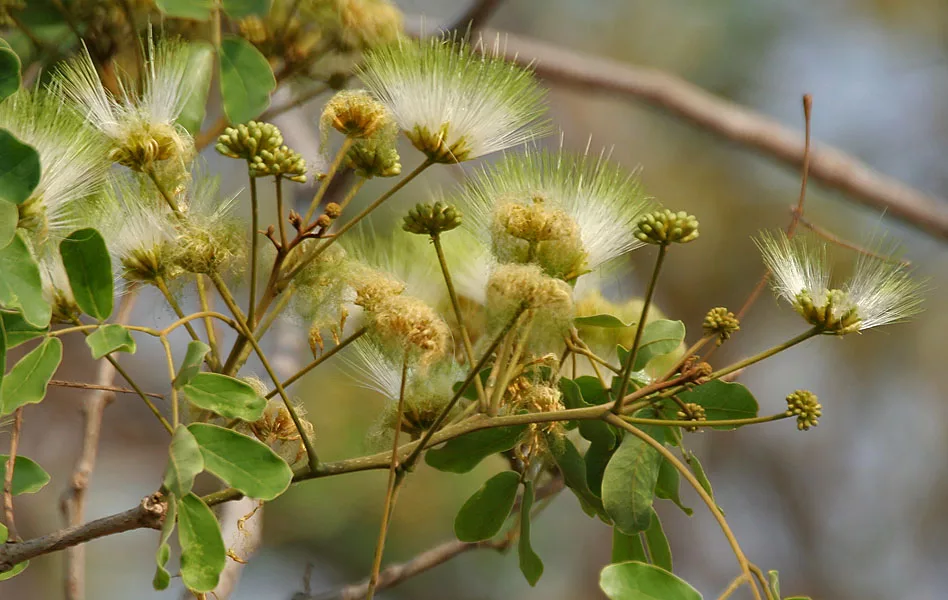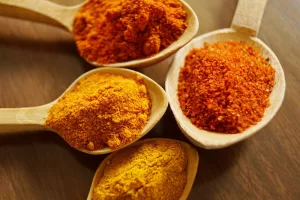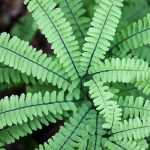Have you ever heard about the Siris Tree? This remarkable tree, scientifically known as Albizia lebbeck, is native to Indomalaya, New Guinea, and northern Australia.
It has become widely naturalized across the tropics and subtropics, particularly in India, Southeast Asia, and northern Australia.
Uncover the medicinal benefits of siris tree and its uses.
What is Siris Tree?
The Siris Tree is easily identifiable by its long, flat pods and yellowish-white flowers. Found abundantly along the roadsides in southern India, this massive tree can reach impressive heights of 18-30 meters, with a trunk diameter ranging from 50 cm to 1 m.
Its bipinnate leaves, 7.5-15 cm long, are divided into one to four pinnules, each with 6-18 leaflets. The flowers are solitary, pure white, and emit a pleasant fragrance, resembling a powder puff.

Medicinal Benefits of Siris Tree
Now, let’s explore the medicinal benefits of Siris Tree. This remarkable plant has been traditionally used for various health purposes. Check out these amazing medicinal benefits:
- Anti-Inflammatory Properties: The Siris Tree is known to be effective in treating inflammation.
- Skin Health: It can help alleviate symptoms of infectious skin conditions, reduce itching, and improve overall skin appearance.
- Respiratory Support: In development as a treatment for respiratory conditions like asthma, COPD, wheeze, and croup.
- Injury Recovery: Facilitates a quicker recovery from injuries.
- Poisoning Consequences: Reduces the severity of the consequences of poisoning.
- Chest Congestion: Helpful in the treatment of chest congestion and coughing.
How is Siris Tree Used in Medicine?
The Siris Tree’s medicinal uses are diverse and intriguing:
- Decoction Gargle: Its bark can be used to make a decoction with antimicrobial properties, effective as a gargle.
- Oral Hygiene: Since ancient times, people have used stems and branches as toothbrushes.
- Eye Health: Applying 2 drops of fresh leaf juice in each eye can prevent seasonal eye allergies, excessive watering, and night blindness.
- Nasal Health: Prevent seasonal nasal allergies and sinusitis by applying 2-4 drops of fresh juice in each nostril.
- Skin Conditions: The bark or leaves can be made into a paste and applied to burning and itchy sores or blisters on the skin.
Geographical Distribution and Uses
The Siris Tree, among the Albizia species, is widespread in India, Southeast Asia, and Northern Australia, thriving in the Himalayan foothills up to 1,200 meters.
Its versatile uses include environmental management, forage, medicine, and timber. In North and South America, it is grown as a shade tree, and its wood is highly valued in India and Pakistan.
For more authoritative information on the medicinal benefits and uses of the Siris Tree, check out these links:
- World Health Organization – Albizia lebbeck
- National Center for Biotechnology Information – Medicinal Uses of Albizia lebbeck
Explore the wonders of the Siris Tree and its rich history in traditional medicine!
FAQs About the Medicinal Benefits of Siris Tree
What are the key medicinal benefits of the Siris Tree?
The Siris Tree, scientifically known as Albizia lebbeck, offers a range of medicinal benefits. It is known for its anti-inflammatory properties, making it effective in treating inflammation.
Additionally, it has been traditionally used to alleviate symptoms of infectious skin conditions, promote skin health, and aid in the treatment of respiratory conditions. The tree’s diverse applications include injury recovery, reducing the severity of poisoning consequences, and providing relief from chest congestion and coughing.
How is the Siris Tree used in traditional medicine?
In traditional medicine, various parts of the Siris Tree are utilized for their medicinal properties. The bark is used to create a decoction with antimicrobial properties, which is effective as a gargle. Stems and branches have been used since ancient times as toothbrushes for oral hygiene.
Applying fresh leaf juice to the eyes prevents seasonal eye allergies, excessive watering, and night blindness. The tree’s leaves or bark can be transformed into a paste and applied to burning and itchy sores or blisters on the skin. These practices showcase the Siris Tree’s versatility in addressing a range of health concerns.
Disclaimer: The following information is provided solely for informational purposes and should not be considered professional advice or a substitute for professional consultation. While every effort has been made to ensure the accuracy and reliability of the information presented, we make no representations or warranties of any kind, express or implied, regarding the completeness, accuracy, reliability, suitability, or availability of the information provided. Any reliance you place on such details is strictly at your own risk.









1 thought on “10 Amazing Medicinal Benefits of Siris Tree to Try Today”